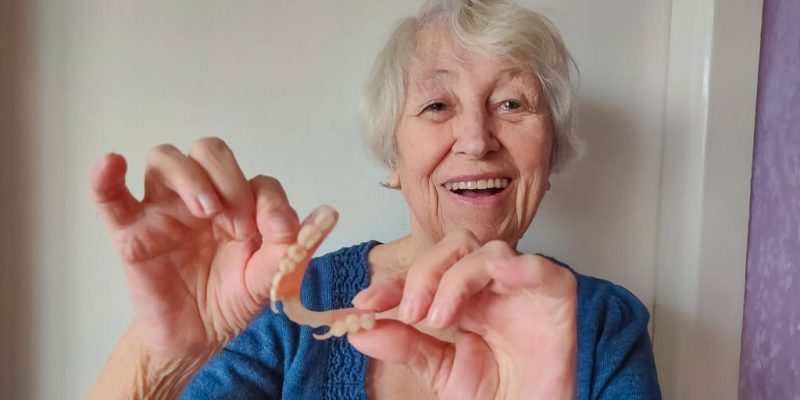Accidents are announced. However, they can leave behind a significant aspect, especially if you’ve lost one or more missing teeth. When it comes to such situations, we understand how complex things can become.
However, what if we told you that you could smile confidently again?
Yes, it’s possible with partial dentistry treatment. When opting for this dental treatment, you can opt for three alternatives: dental implants, removable partial dentures, and fixed bridges. All these choices will enhance the look of your smile and retain the position of your teeth.
But what is this partial dentures treatment about? How do partials for teeth work? Let’s figure out as we explore the different stages involved in this dental treatment in the following sections.
Partial Dentures: How Does Orthodontics Work
Partial dentures are cosmetic devices that replace multiple teeth in the upper or lower part of the mouth. These removable dentures help enhance speaking and chewing for the patient.
When done by a professional dentist in Reidsville, NC, they look very natural, which enhances beauty by keeping the smile intact. However, there are several aspects of how removable partial denture work. Let’s check them out in the following sections of the blog.
When Does One Need A Partial Denture?
Denture partial is functional when someone has lost more than one tooth. The loss of teeth can be due to various reasons:
- Accidents
- Tooth extraction
- Tooth decay
Therefore, if any of these situations fit you, connect with professionals like NC dentures today. Once done, they will provide you with different denture options made of acrylic resin, cast metal, and porcelain.
Steps Involved In A Partial Denture Treatment?
Getting removable partial dentures involves the following four steps:
- Restoration: In the first checkup, the dentist studies the patient’s oral health and, in cases of problems, restores them to a healthy state. Dentists recommend extracting teeth in bad shape before attaching partial dentures.
- Impressions: In the second stage, your dentist makes an impression on the teeth and gums. This allows them to prepare dentures to custom fit your requirements.
- Placement & Adjustment: After the dentures are ready, the dentist seats the partial denture and ensures that it fits perfectly in the mouth.
In case there is anything wrong, adjustments are made accordingly. The dentures are modified correctly for better bite and comfort.
How Is A Partial Denture Attached?
Whether you opt for partial dentures, upper or lower, they are usually fitted in the mouth using clasps or precision attachments. The clasps are made of metal which encircles half of the teeth adjoining the dental partials.
It might be visible when you smile, depending on the placement of the clasp. In contrast, precision attachments are placed onto existing teeth or dental implants. These are custom-made in a manner that fits over the existing teeth.
So now that we have an idea of the dental ailment let’s look at its pros and cons in the following section.
Pros and Cons Of Partial Dentures?
Before you decide if having partial dentures is a good option, let’s discuss the pros and cons.
Here are the pros or benefits of having partial dentures:
1. Replacement for missing teeth:
This is the most evident reason for getting a partial denture. A dentist in Reidsville, NC, recommends partial dentures for a patient with more than a tooth in a row. Apart from that, partial dentures help replace teeth on both jaws with a single device.
2. Non-Invasive Treatment:
Partial dentures are a good choice for people with dental issues, making it impossible to carry out invasive treatment procedures. These do not require significant modifications in the teeth or any surgery.
3. Restoring the ability to chew and speak:
The absence of teeth makes chewing food very difficult, leading to appetite-related problems. Therefore, you might need more nutrition to have a proper diet.
Apart from that, speaking becomes difficult as well. Partial dentures are a simple yet effective alternative to regain your teeth’ functionality.
4. Proper maintenance of the jaw structure:
Each tooth is crucial, so the absence of teeth can disturb the balance, and your remaining teeth might shift toward the gap.
So with time, new dental problems start arising, which affects appearance too. Partial dentures help maintain the space between the remaining natural teeth and prevent them from shifting, which can misalign them.
5. Convenience:
Partial dentures are temporary and can be removed at your wish. This makes it easy to maintain hygiene. Besides, partial dentures can be adjusted from time to time to fit perfectly throughout.
Now we have talked about the pros; it’s time to discuss the cons:
- Your mouth needs to get accustomed to having a partial denture in the mouth, and initially, the process can be a bit uncomfortable.
- They are tough to repair, and new ones would be required if the abutment or the support is lost, which is quite common in older people.
- It is essential to clean the partial dentures every night and soak them in cold water to retain their shape.
Conclusion!
This brings us to the end of our article on partial dentures. Remember, partial dentures are an excellent treatment option if you have one or more missing teeth.
However, before you opt for the treatment, ensure that you understand the steps involved in the procedure. All the best!
Get Complete Knowledge Of Your Dentures
Having no or incomplete idea of partial dentures can be challenging. Don’t let half-knowledge affect your lifestyle. Come, and consult your partial denture procedure with our professionals at Caring Modern Dentistry and know every aspect of the procedure. Connect with us today a (336) 342-0889.

